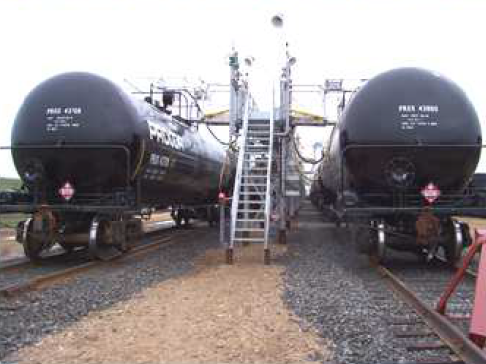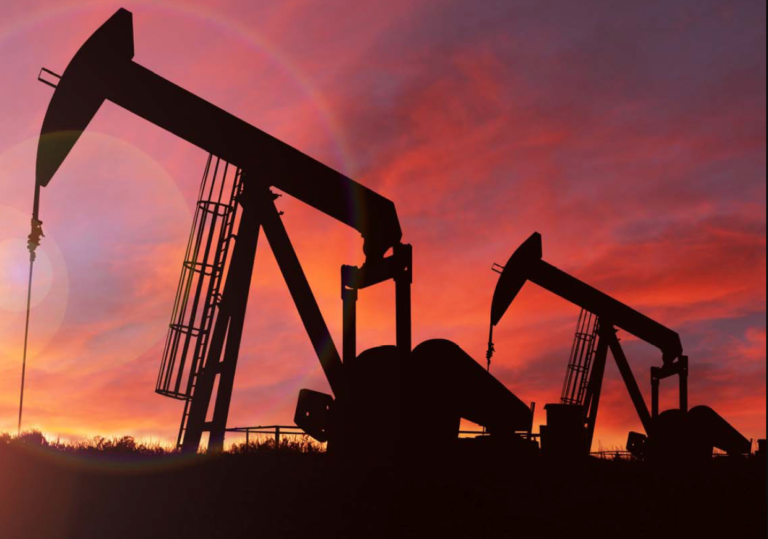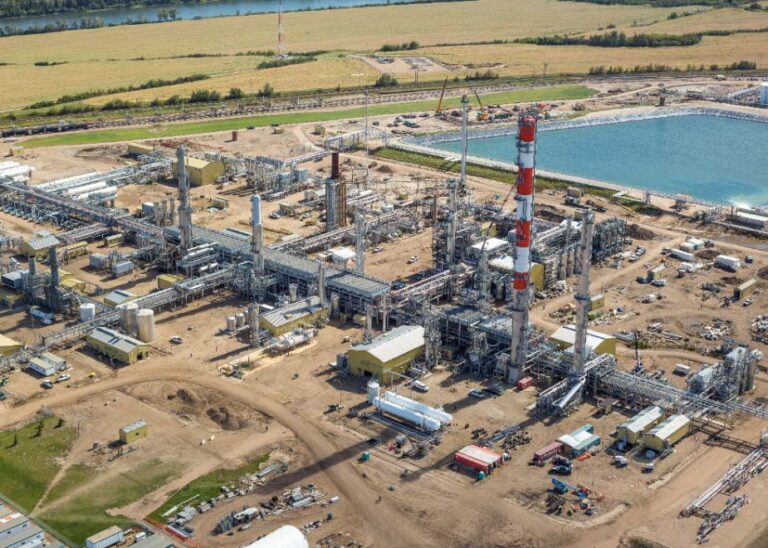Diluted Bitumen Railcar Vapour Control:
Safety Concerns in the Transport Industry
Todd Kennedy
Rangeland Engineering Company
Calgary, AB
Freddy Arias
Rangeland Engineering Company
Calgary, AB
Current Version: October 22, 2015
Corresponding author:
Todd Kennedy
Rangeland Engineering Company
Suite 400, 534 – 17th Avenue SW
Calgary, AB T2S 0B1
Business: 403-265-5130
Abstract:
Designers, operators, and owners not being fully informed on the substances they are handling is a recipe for disaster. For years, the crude oil transportation industry has been operating under assumptions about the composition of crude oil vapours. Recently, rail loading operators have begun taking measures to control and limit the release of these vapours to atmosphere; however, assumptions are still being made about composition. The truth is that these vapours contain oxygen and hydrocarbons in a flammable mixture. For less than a nickel per barrel of crude oil being transported by rail, these vapour mixtures can be made safe, accidents can be avoided, and asset value can be protected.
1 – Introduction
When discussing “Cost Reduction” in the oil and gas industry, the focus tends to be on how we can build facilities for less capital cost or reduce operating expenses by implementing more efficient technologies or procedures. What is often overlooked is the depreciation of existing assets. There are many factors that can attribute to the depreciation of an asset or market but incidents, safety, and reputation are crucial. Recent events in the crude by rail industry have cast a dark shadow on the safety of the industry and increased social pressures to cut back on throughput or make improvements.
A decline in crude by rail markets under public scrutiny can be attributed to the sale of Canexus’ North American Terminal Operations for well below value [1]. It is difficult not to wonder what the sale price of the facility would have been if tragic accidents such as Lac Mégantic [2] could have been avoided.
Not only are individual companies and assets affected by incidents but the value of the entire national market [3]. It is only a matter of time before small unreported incidents such as flash backs from flares and incinerators turn into something more serious with significant financial impact.
2 – Background
Crude oil has been transported by railway for decades. With environmental and political opinions surrounding crude oil pipelines in the United States and Canada, the quantity of crude oil being shipped by rail surged. Unit train loading facilities are being built in record sizes to help get the product to markets across the continent. While experts in the industry will argue pipeline safety over railway safety (or vice versa), neither is without concern [4]. One of the highest risks in the transportation of dangerous goods is the misunderstanding the product being transported.
Also, with safety and environment in mind, the way that crude oil is being handled at crude oil terminals throughout North America is changing. Responsible producers and shippers are taking steps to limit personnel exposure to hydrocarbon vapours and limit the amount of hydrocarbon released into the atmosphere. At loading terminals, this is being done by installing a closed loading system with a Vapour Control System (VCS). With these industry trends and the simultaneous incidents, the crude by rail industry has a moral obligation to investigate further. Turning a blind eye to the reality of crude oil vapour composition is unacceptable. It shouldn’t take fatal incidents and hundreds of millions of dollars in losses before action is taken to make this industry as safe as it can possibly be.
3 – Loading Operation
It is not uncommon to see facilities which still operate an open loading system. This typically means that the top of the railcar is opened to atmosphere while the crude is being loaded, Figure 1. This type of operation is faster and less expensive to install or operate than a closed loading system.

Crude oil vapours are commonly treated as less hazardous than other industry by-products and more of an odour than a hazard as long as the hydrogen sulfide (H2S) content is below exposure limits (Alberta OH&S 8-hour exposure limit = 10 ppm; ceiling exposure limit = 15 ppm).
Regardless, some producers are taking the extra necessary action to limit the exposure of their operators to these vapours which are believed by experts to have nauseating and long-term toxic effects on humans. Limiting these vapour releases are also a benefit to neighbouring communities which would otherwise be exposed to foul odours escaping the facility.
Figure 2 shows a closed loading system that eliminates or reduces the hydrocarbon content of the vapours being released. These closed loading systems often include a variety of additional control processes such as incinerators or flares.
4 – Diluted Bitumen Railcar Vapour Composition
Once a railcar is fully loaded and closed there is still a small vapour space at the top of the car. This is because the gross weight of the railcar has reached the railroad transportation limit or the loading operation left some space in order to prevent overfill and spillage.
This small vapour space will contain some hydrocarbon vapours. The concentration of hydrocarbon in the vapour space is directly related to the vapour pressure of the liquids and can be estimated with the following calculation:

Assuming a True Vapour Pressure (TVP) of 25 kPa using a publicly available [5] dilbit Reid Vapour Pressure (RVP) and the available correlations normally used for natural crude oils, the hydrocarbon concentration in the vapour space of a railcar at atmospheric pressure (~100 kPa) would be around 25%. This is much higher than the common belief that the vapour space will only have concentrations with an order of magnitude on the parts per million (ppm) scale (i.e. enough to smell and detect but lower than flammable/explosive limits).
5 – Vapour Pressure of Diluted Bitumen
In many conventional oil transportation systems, the raw composition of the oil has a low enough viscosity to ship into gathering systems without the need to dilute. In heavy oil or oil sand operations, the product is too viscous to economically gather without dilution. As a result, transportation companies purchase diluent or condensate from the downstream refineries, ship it to the original oil production point, blend it with the raw stock, and ship the blend to the refinery. The refinery will then separate the diluent or condensate from the blend and sell it back to the transportation company.
This diluted bitumen product that is being transported could have a variety of compositions depending on the composition of the diluent or condensate used as well as the blend ratio. The ratio used, usually depends on market conditions, system hydraulics, and season. In winter months, the blend usually contains more diluent or condensate than in summer months in order to maintain an effective viscosity at lower temperatures [6].
Diluents and condensates are made up of lighter hydrocarbons that include some propane, butane, pentane and heavier hydrocarbons. Therefore, the blended mixture has a higher vapour pressure which directly affects the vapour phase of the diluted bitumen in storage tanks and in railcars.
6 – Offloading Operation
The typical method for off-loading crude oil railcars is by bottom offload. This means that the diluted bitumen is drained via a valve on the bottom of the railcar. In order to avoid the generation of a vacuum in the railcar while offloading, the hatch or vent valves are opened to atmosphere creating an open offloading system that is a typical and inexpensive operation. This means that air (78% nitrogen, 21% oxygen, and 1% water vapour/carbon dioxide/argon) enters the railcar.
Once completely emptied, a common misconception is that the railcar contains only air with trace amounts of hydrocarbon vapour.
In theory, the railcar will contain a hydrocarbon concentration equivalent to what was calculated in Eq.1. Figures 3a and 3b illustrate that this is due to the vapours that will be expelled from the liquid as it drains. The actual volume of gas that will come from the diluted bitumen compared to how much air is drawn in through the valves may vary from the theoretical calculation due to the varying pressure in the railcar (possibly a small vacuum depending which valves are opened), temperature of the railcar, transient state rather than equilibrium steady-state, and the true vapour pressure of the diluted bitumen. This composition could also change slightly during transportation of the “empty” railcar due to changes in pressure and temperature as well as residual oil in the car.

7 – Flammable Mixtures
7.1 – Laboratory Experiments
In 2015, Rangeland Engineering Company Ltd. (REC) contracted the Department of Chemical and Petroleum Engineering at the University of Calgary (U of C) to conduct a series of experiments at the U of C’s heavy oil laboratory [7]. Railcar conditions were simulated for multiple products with various vapour pressures and the resulting vapour samples were analyzed. The 4 fluids are described in Table 1. Each experimental run consisted of the steps show in Table 2 and each experimental run was repeated 3 times; thus, providing 3 sets of data for each fluid.

1:200,000 bench scale equipment was designed and custom built. Four identical model rail vessels were constructed. Each model railcar includes a 500 cm³ (5 cm ID, 25.5 cm length) cylindrical vessel in a horizontal configuration equipped with one valve on the bottom, one valve on the top and one pressure gauge on the top, Figure 4. Temperature is controlled with heating tape and a similar shaped transfer vessel is used for displacing the oil into and out of the model railcar vessel. This displacement was controlled by a Quizzix Pump for accurate volumetric displacement.
Figure 5 shows the model railcar vessels on the shaker table which was used to simulate the movement of a railcar. Note, heating tape has been removed so that a clear photograph could be taken.
Figure 6 shows the displacement of a sample into the model railcar while obtaining a gas sample into the pycnometer placed on the top of model railcar (upper center of image).


The resultant experimental data showed that the vapour released during diluted bitumen offloading and contained in the railcar with residual liquid for several days of transportation was less rich in hydrocarbon than theoretically predicted. This raised further concern because at the theoretical concentration, the vapour was expected to be above the Upper Flammability Limit (UFL) meaning that it would need to be further diluted with air in order to combust. At the concentration found during the laboratory experiments, the vapour was within the flammability limits. The only experimental fluid, of the four tested, which had vapour that was not flammable was diesel, which has a vapour pressure that was essentially 0 psi at the test temperature of 37.8°C.
7.2 – Industry Samples
REC acquired real-time samples from an “empty” railcar as it was loaded at a unit train loading terminal in Alberta. Table 3 summarizes the resultant data of these samples when compared to the diluted bitumen (product 1 in Table 1) bench scale experimental data provided by the U of C and the theoretical results based on Eq.1. The auto-ignition temperature, Lower Flammability Limit (LFL) and UFL are also shown in Table 3. These data are the theoretical limits calculated by Rangeland and are based on the compositional data shown in Table 3.

The data presented in Table 3 clearly shows that experimental and actual industry samples resulted in mixtures near the flammability limit.
7.3 – Flammable Mixtures in Railcars
The probability of a vapour and air mixture being flammable depends on the product vapour pressure, temperature, and pressure of the system. These properties are used to classify refined products. For example, electrostatic ignition classifications are based on hydrocarbon mixtures with low vapour pressure, intermediate vapour pressure and high vapour pressure. Intermediate vapour pressure products can produce flammable mixtures in the vapour spaces of storage tanks or vessels containing air at ambient temperatures.
Other than the fact that the railcar loading, transport and unloading operators have to process vapours that are close to the UFL, they also need to deal with the following conditions:
- Rail terminals are typically fed directly from a pipeline or pipeline terminal. The diluent content and composition is dictated by economics and ambient conditions. This means that the vapour composition in diluted bitumen railcars will be inevitably changing throughout the year making it difficult to predict.
- In winter, the “empty” railcars arriving at crude loading terminals will likely be at subzero temperatures (Celsius). Under this condition the vapour composition in diluted bitumen railcars could be more firmly in the flammable range rather than near the upper limit.
- Cross loading products in a terminal that share a VCS is a recipe to create flammable mixtures even when both products are independently at safe compositions. For example, diesel railcars would be expected to have a vapour lean on hydrocarbons while a high vapour pressure diluted bitumen would be expected to be rich; the composition of the mixture of these vapours could be within the flammable limits.
- New or repaired cars typically arrive full of air. This could introduce oxygen into a system which controls and limits oxygen content as a layer of protection against combustion.
Figure 7 illustrates the wide range of compositions which could be found in “empty” diluted bitumen railcars upon arrival plotted on a flammability chart from API Recommended Practice 2003 [8]. With operating temperatures commonly between 5°C and 25°C, the theoretical composition of the vapour space in a railcar would be above the flammability limit. However, with actual operating temperatures ranging from -40°C to +40°C and the actual compositions found in Table 3, there is a high probability that railcar vapours are flammable.

The wide range of operating temperatures is a result of railcars travelling longitudinally across the continent between the gulf coast and northern regions of Canada. The temperature change during transit also means that an “empty” railcar could start out above the upper flammability limit in the south and arrive within the flammable limits in the north without ever being opened in between, Figure 8. This is graphically represented in Figure 9 by plotting the change on the flammability chart from API Recommended Practice 2003 [8] and assuming an RVP of 20kPa at 8°C.

Even if railcars arrive at the loading terminal in the north with lean hydrocarbon vapour mixtures but the vapour pressure of the product being loaded is higher, the composition in the Vapour Control System (VCS) could transition through the flammable limits during loading. Brand new railcars or railcars returning from being repaired are a prime example of this potential problem. Figure 10 shows how the vapour composition might change during this type of scenario assuming an RVP of 10kPa and a temperature around 17°C.

8 – Vapour Control Systems
The Canadian Environmental Protection Act requires facility owners or operators to report the release of more than 10 tons/year of volatile organic compounds (VOC) under Section 9 of the Guide for Reporting to the National Pollutant Release Inventory (NPRI) [9]. A 100 kbpd diluted bitumen loading terminal will release about 2,300 tons/year of VOCs if no vapour control system (VCS) is in place.
There are basically two types of VCS:
- Vapour Destruction Units (VDU)
– Flares
– Incinerators
– Catalytic Oxidizers - Vapour Recovery Units (VRU)
– Vapour balancing
– Carbon adsorption
– Lean oil absorption
– Condensation/refrigeration
– Membrane separation
Each of these processes has a set of limitations and the correct process must be used for the operating conditions, available utilities, and vapour composition. VRUs have been economically justified in some special cases by the products recovered; however, VDUs (flares and incinerators) are the most frequently used processes.
In Canada, there is no official regulation for the design of a diluted bitumen VCS. In the United States, regulations have been developed by the U.S. Coast Guard defining requirements for bulk transfer facilities to minimize the risks associated with fire, detonation, explosion, overfill, overpressure, and under-pressure. These regulations are detailed in the United States Code of Federal Regulations (CFR) 33 CFR Part 154 [10] for shore side facilities and 46 CFR Part 30 [11] for vessel side facilities. Although these regulations may only be mandated in the United States and focused on marine applications, they provide a good basis for design safety and vapour handling at bulk transfer sites. It is not uncommon to apply design safety standards from one type of facility (i.e. bulk marine loading) as design safety recommendations for relatable types of facilities (i.e. bulk rail loading).
9 – Combustion and Ignition
9.1 – Requirements for Combustion
The fire triangle or combustion triangle shown in Figure 11 is a simple model for understanding the necessary ingredients for a fire event. The triangle illustrates the three requirements: heat, fuel, and an oxidizing agent (usually oxygen). A fire naturally occurs when the elements are present and combined in the right mixture, meaning that fire is actually an event rather than a thing.

A fire can be prevented or extinguished by removing any one of the elements in the fire triangle. For example, removing the heat or ignition source removes one side of the triangle and can prevent or extinguish a fire. Another approach to preventing a fire is to change oxygen and fuel mixture to a point outside of the limits required to initiate or sustain a fire.
9.2 – Heat and Ignition Sources
There are multiple sources of ignition during the loading, unloading, and transportation of crude oil that include the following:
- Auto ignition
- Static electricity, lightning, and stray currents
- Direct fire from VDUs (flares, incinerators)
- Chemical reactions (including adsorption heat on carbon activated VRUs)
Careful engineering and design can prevent ignition sources from reaching an oxygen and fuel mixture which can ignite.
9.2.1 – Auto ignition
As per 33 CFR 154, §154.2100 Vapour Control Systems (VCS) [10]:
“The VCS piping surface temperature must not exceed 177°C (350°F) or 70 percent of the auto-ignition temperature in degrees Celsius of the vapours being transferred, whichever is lower, during normal operations. This must be achieved by either separating or insulating the entire VCS from external heat sources.”
The railcar vapour composition auto ignition temperature is approximately 360°C. Considering that some diluted bitumen could be entrained with the vapour (estimated bitumen auto ignition temperature is around 200°C), designing the VCS piping surface to not exceed 177°C is a prudent practice that will prevent auto ignition.
9.2.2 – Static Electricity
Static electricity is generated by the movement of materials. Some common examples of frictionally generated static electricity are:
- Separation of liquid or gas from a hose, nozzle, faucet, or pouring spout.
- The movement of liquids, gases or solid particles relative to other materials such as flow through pipes, mixing, pouring, pumping, filtering, agitating, and other types of fluid handling.
- Turbulent contact of dissimilar fluids such as water or gas flowing through a liquid hydrocarbon.
Oil loading and unloading facility design normally considers procedures like bonding, grounding, and insulating vessels. Also, low initial flow rates when filling the railcars will help to minimize static electricity. See API Recommended Practice 2003 for further details. Out of the operators’ control is the potential risk of generating static electricity during transportation where the fluid is normally exposed to constant agitation.
9.2.3 – Direct Fire from VDUs
Any source of heat from a thermal oxidizer (incinerator or flare) needs to be isolated from the terminal VCS. Three layers of protection are required by National Fire Protection Agency (NFPA) 69 Standard on Explosion Prevention Systems [13] to prevent this ignition source from reaching the oxygen and fuel mixture. The following are some potential layers of protection commonly used in VDUs.
- An inline deflagration flame arrester that should be installed as close as possible to the operational ignition source. It is necessary to choose a temperature monitored deflagration flame arrester for detecting a stable flame on the arrester surface.
- A burner inlet combined with minimum flow control for ensuring a minimum cross-sectional flow velocity to prevent reverse flame travel. This layer of protection should only be accepted as an independent measure if it has an independent acceptance (by the owner or owner’s engineering consultant) as a dynamic flame trap.
- A static detonation flame arrester which can be installed at any distance from the possible ignition source.
- Monitoring of oxygen and/or fuel concentration if composition is expected to be outside of flammable limits.
9.2.4 – Chemical Reactions/Adsorption
A process like adsorption on activated carbon beds could generate enough heat to act as ignition source since the adsorption of liquid hydrocarbon and/or H2S are exothermic processes. The design of this type of VCS must include a liquid knockout vessel and a separate H2S scrubber where heat of absorption can be controlled. John Zink [14] offers a suitable design for an adsorption process with liquid removal.
10 – Recommendations
It should be obvious that there is a flammability or explosion risk due to the composition of the vapours within diluted bitumen railcars. These railcars travelling back to oil production areas after being offloaded are commonly perceived to be empty except for trace hydrocarbons. That misconception is dangerous to personnel safety and the environment. It leads to unexpected fires at facilities and unaccounted for, uncontrolled release of VOCs to the atmosphere. Note, these “empty” railcars are travelling through populated areas containing flammable vapour compositions.
There are industry wide changes which can be implemented to make the crude by rail operation vastly safer. The following is a list of possible remedies that are presented in order of increasing safety.
10.1 – Purge VCS Headers to a Safe Composition
This can be achieved with an inert gas such as nitrogen to limit the oxygen content to a concentration less than that required for combustion or with a hydrocarbon such as methane to increase the hydrocarbon content to a concentration too rich for combustion (UFL).
If an inert gas is used, it is recommended to purge with 1m3 of gaseous nitrogen (at the operating pressure of the vapour collection header) for every 1m3 of diluted bitumen being loaded into railcars. The small green arrow in Figure 12 shows how this will shift the composition out of the flammable limit to the limiting oxygen concentration (LOC).
The elevated flow rates associated with an inert gas purge will likely cause operational upsets due to the backpressure built up in the railcars. Railcars should not be disconnected from the vapour system until the pressure is below 5 kPa. The exact time this will add to each loading cycle is dependent on operator efficiency and facility capacity calculations but could be estimated at 40 minutes per batch of railcars filled. The estimated operating cost for nitrogen consumption at a 100 kbpd facility is $4,000 per day based on a nitrogen price of $0.25/m3. This is equal to less than $0.05 per barrel. Note, nitrogen prices are not as publicly available as commodities such as natural gas and could vary widely depending on supplier, contract terms, location, method of delivery, etc.
If a hydrocarbon gas purge is used and assuming methane is used, it is recommended to purge with about 0.15 m3 of gaseous hydrocarbon for every 1m3 of crude being loaded into railcars. The small blue arrow in Figure 12 shows how this will shift the composition out of the flammable limit above the “UFL”. The 15% ratio may need to be increased to as much as 30% if a “worst case” scenario where all of the connected railcars contain 100% air upon arrival is credible. Note, safety factors should be determined on a case-by-case basis.
The estimated operating cost for methane consumption at a 100 kbpd facility is $275 to $550 per day based on a 15% purge rate and an Alberta natural gas price of $3 / GJ (5 year forecast average from AECO-C as of August 2015 [15]). This is equal to less than $0.01 per barrel.
This recommendation does provide a layer of protection at the loading facility but does not address concerns during offloading, transit, or storage of the railcars.

10.2 – Remove Diluent from Diluted Bitumen Streams
Separate the light ends out of the diluted bitumen at the loading terminal prior to loading the railcars. This would effectively lower the vapour pressure of the liquids being loaded and transported; thus, limiting the quantity of hydrocarbon vapours in railcars.
While the cost to implement this recommendation would require specific project details and further engineering, there is a cost benefit to this recommendation. Diluent is a marketable product. Alberta Treasury Branch (ATB) Corporate Financial Services forecasts the price of condensate at about $65/bbl (CAD) in 2015 and climbing to over $100/bbl (CAD) by 2020 [16]. A transportation company could save on purchase price and transportation costs by recovering the diluent and returning it to the heavy oil pipeline initiation stations. The capital cost to acquire coiled railcars, a heating system at the offloading terminal, and the diluent recovery unit could be recovered in a short time frame if margins between crude oil price and diluent or condensate remain large. The margin is currently ~$25/bbl (CAD) according to Western Canadian Select Crude Oil prices published by the Petroleum Services Association of Canada (PSAC) [17].
This recommendation may be applicable to unit trains with a single source and single destination as it is a controllable loop but may not be as easily implemented where railcars are sourced from all over the continent and carry different products from different producers with different blends. A similar process has been implemented by government regulation in South Dakota for the export of Bakken crude [18].
10.3 – Stop Introducing Oxygen to Railcars
The removal of oxygen would eliminate one of the three sides of the Combustion Triangle (Figure 11); thus, eliminating the risk of fire or explosion. Rather than opening the railcars to atmosphere during offloading, the vapour space could be filled with nitrogen, methane, carbon dioxide, or another passive agent connected to the vent valves on top of the railcar. This creates the closed offloading system illustrated in Figure 13. The amount of gas required would be equal to the volume of crude being offloaded similar to the nitrogen purge scenario discussed in recommendation 1. The composition of the railcar vapour would then remain along the right boundary of Figure 12, away from the flammable region.

Operational efficiencies could also be implemented with this recommendation by increasing the railcar pressure by a small amount; thus, decreasing the time required to offload. Again, this would depend on the utilities available or implemented at the offloading facility. New railcars and railcars which have been opened to atmosphere for maintenance or refurbishment should also be purged to eliminate any source of oxygen.
If nitrogen is used and assuming the same cost of nitrogen at the offloading facility as was assumed for the loading facility in recommendation 1, the cost will also be ~$4,000 per day for a 100 kbpd facility. This is equal to less than $0.05 per bbl. When methane is used and assuming the same cost for methane at the offloading facility as was assumed for the loading facility in recommendation 1, the operating cost will be ~$1825 per day for a 100 kbpd facility. This is equal to less than $0.02 per bbl.
This recommendation protects the railcars during offloading, transit, storage, and loading – the complete transportation cycle. It would require consensus amongst offloading terminals or government imposed regulations in order to be reliable and most effective. If the cost of this purge is too high to be economically feasible, an engineering study could be performed to determine how much air could be allowed into the system – in parallel with the purge – without creating a flammable mixture.
11 – Conclusion
Using engineering calculations and actual field test data, a condition of serious concern has been identified in the crude by rail transportation industry. This risk could lead to future incidents and is the likely cause of some past incidents. Cost reduction efforts require more than just high-efficiency construction and operation but protection of asset value. Capital and/or operational gains should never come at the cost of facility safety or operator personal safety.
The processes for moving flammable mixtures are, by their very nature, high risk operations. These risks should be minimized or avoided wherever possible. The following three recommendations would each mitigate the risk:
- Purge the vapour collection header at the railcar loading terminal – this recommendation would be easy to implement and can be relatively inexpensive with an operating cost of less than $0.05 per barrel.
- Remove light ends – this recommendation will require some significant capital investment but has some strong cost recovery incentives and a higher safety factor.
- Eliminate oxygen content – this recommendation has the highest safety factor, an operating cost of less than $0.05 per barrel, addresses the whole transportation cycle and offers some increased operating efficiency but will be the most difficult to implement unless it is approached on an industry wide basis.
Acknowledgements
The authors would like to recognize Bill Svrcek, Harvey Yarranton, and Florian Schoeggl of the University of Calgary as well as Carlos Duque and Ron Daye for their input and support in the preparation of this paper.
References
[1] D. Healing. (2015, June 4). Cenovus buys Canexus oil-by-rail terminal for bargain $75M [Online]. Available: http://calgaryherald.com/business/energy/cenovus-buys-canexus-oil-byrail-terminal-for-bargain-75m
[2] M. Beaudin. (2014, Jan. 21). Lac-Megantic disaster: Where things stand today [Online]. Available: http://www.montrealgazette.com/business/M%C3%A9gantic+disaster+Where+things+stand+today/9418300/story.html
[3] Thomson Reuters. (2014, Jan. 23). How crude-by-rail accidents may impact the U.S. oil market [Online]. Available: http://business.financialpost.com/investing/how-crude-by-railaccidents-may-impact-the-u-s-oil-market
[4] K. Mackrael. (2015, May 10). Canada to ‘meet or exceed’ U.S. rules on shipment of oil by rail [Online]. Available: http://www.theglobeandmail.com/news/politics/canada-us-unveiltougher-rail-safety-standards-for-transporting-oil/article24208597/
[5] Imperial Oil. (Unknown). Kearl Oil Sands [Online]. Available: http://www.exxonmobil.com/crudeoil/download/KearlOilSands_withAssay.pdf
[6] H.M. Brown. (Unknown). The Physical-Chemical Properties of Bitumen in Relation to Oil Spill Response [Online]. Available: https://docs.neb-one.gc.ca/lleng/llisapi.dll/fetch/2000/90464/90552/548311/956726/2392873/2451003/2538006/B280-19_-Trans_Mountain_Follow-Up_Response_to_NEB_Ruling_33_Weaver_A_F-IR_No.1.11a.3_Attachment_1-_A4D3H8.pdf?nodeid=2538558&vernum=-2
[7] F.F. Schoeggl and H.W. Yarranton, “Vapor Composition of Hydrocarbons and Bitumen in Model Railcars,” unpublished.
[8] Protection against Ignitions Arising out of Static, Lightning, and Stray Currents, API Recommended Practice 2003, 2008.
[9] Guide for Reporting to the National Pollutant Release Inventory (NPRI), Canadian Environment Protection Act (CEPA), 1999.
[10] Facilities Transferring Oil or Hazardous Material in Bulk, Title 33 United States Code of Federal Regulations (CFR) Part 154, 2014.
[11] Safety Standards for Self-Propelled Vessels Carrying Bulk Liquefied Gases, Title 46 United States Code of Federal Regulations (CFR) Part 154, 2014.
[12] Various. (Unknown). Fire Triangle [Online]. Available: https://en.wikipedia.org/wiki/Fire_triangle
[13] Standard on Explosion Prevention Systems, National Fire Protection Agency (NFPA) 69, 2014.
[14] Carbon Adsorption Vapour Recovery Systems, John Zink Hamworthy, Tulsa, OK, 2013.
[15] Gas Alberta. (2015, Aug. 20). Forecast delivery prices (AECO-C) to Aug-2019 for gas delivered within the province of Alberta [Online]. Available: http://www.gasalberta.com/pricing-market.htm
[16] Alberta Treasury Branch Corporate Financial Services. (2015, Jul. 21). Commodity Price Forecast [Online]. Available: https://www.atb.com/SiteCollectionDocuments/Business/PriceForecast.pdf
[17] Petroleum Services Association of Canada. (2015, Aug. 20). Market News [Online]. Available: http://www.psac.ca/business/firstenergy/
[18] D. Shaffer. (2014, Dec. 9). N.D. regulators order treatment of crude oil for safety [Online]. Available: http://www.startribune.com/north-dakota-regulators-order-treatment-of-crudeoil-for-safety/285301951/
Nomenclature
Auto ignition – Ignition with self-sustained combustion without an external source of ignition; normally due to heat above the “auto ignition temperature” of a certain mixture.
Bitumen – A semisolid or solid mixtures of hydrocarbons and as much as 50 percent heterocyclic compounds, composed largely of carbon and hydrogen but have substituents of nitrogen, oxygen, sulfur, and trace metals, especially iron, nickel, and vanadium.
Closed loading system – A process by which product is loaded into a transport vessel without opening the vessel to atmosphere.
Closed offloading system – A process by which product is removed from a transport vessel without opening the vessel to atmosphere.
Combustion – A chemical process of oxidation that occurs at a rate fast enough to produce heat and usually light in the form of either a glow or flame.
Condensate – A type of diluent containing light hydrocarbons condensed out of raw natural gas.
Deflagration – The propagation of a combustion zone at a velocity that is less than the speed of sound in the unreacted medium.
Detonation – The propagation of a combustion zone at a velocity that is greater than the speed of sound in the unreacted medium.
Dilbit – Bitumen diluted with one or more light petroleum products, typically natural gas condensate such as naphtha.
Diluent – A diluting agent used to reduce the viscosity of heavy bitumen in order to transport via pipeline.
Explosion – A sudden release of energy due to increase in volume typically due to temperature increase or combustion.
Flame Arrester – A device that prevents the transmission of a flame through a flammable gas/air mixture by quenching the flame on the surfaces of an array of small passages through which the flame must pass in order to travel further.
Flame Speed – The burning velocity of a laminar flame under specified conditions of composition, temperature, and pressure for unburned gas (a.k.a. flame burning velocity).
Flammability Limit, Lower (LFL) – The lowest concentration of a combustible substance in an oxidizing medium that will propagate a flame.
Flammability Limit, Upper (UFL) – The highest concentration of a combustible substance in a gaseous oxidizer that will propagate a flame.
Inerting – A technique by which a combustible mixture is rendered non-flammable by adding an inert gas such as nitrogen.
Limiting Oxygen Concentration (LOC) – The least amount of oxygen required in a gas mixture in order for the mixture to be flammable.
Open loading system – A process by which product is loaded into a transport vessel while the vessel is open to atmosphere (a.k.a. splash loading).
Open offloading – A process by which product is removed from a transport vessel while the system vessel is open to atmosphere.
Packing Group (PG) – A grouping according to the degree of danger presented by dangerous goods or hazardous materials with PG I indicating the greatest danger and PG III indicating the least danger.

Passive agent – A substance – such as nitrogen or carbon dioxide – which is neither a fuel nor an oxidizing agent and can be used to suppress a fire.
Railbit – Aimilar to dilbit with a significant amount or most of the diluent removed typically for transport by railcar after arriving at rail terminal by pipeline.
Raw stock – Bitumen, crude oil, or other natural commodity in the composition and state at which is it removed from the earth.
Unit train – A long string of railcars all containing the same product with the same origin and same destination; thus operating as a unit.
Vapour Control System (VCS) – A process used to control the release and composition of vapours typically in a hydrocarbon handling facility.
Vapour Pressure, True (TVP) – The pressure exerted by a fluid at a very low vapour to liquid ratio at a given temperature.
Vapour Pressure, Reid (RVP) – The pressure exerted by an air saturated fluid at a vapour to liquid ration of 4 to 1 at 37.8°C.









